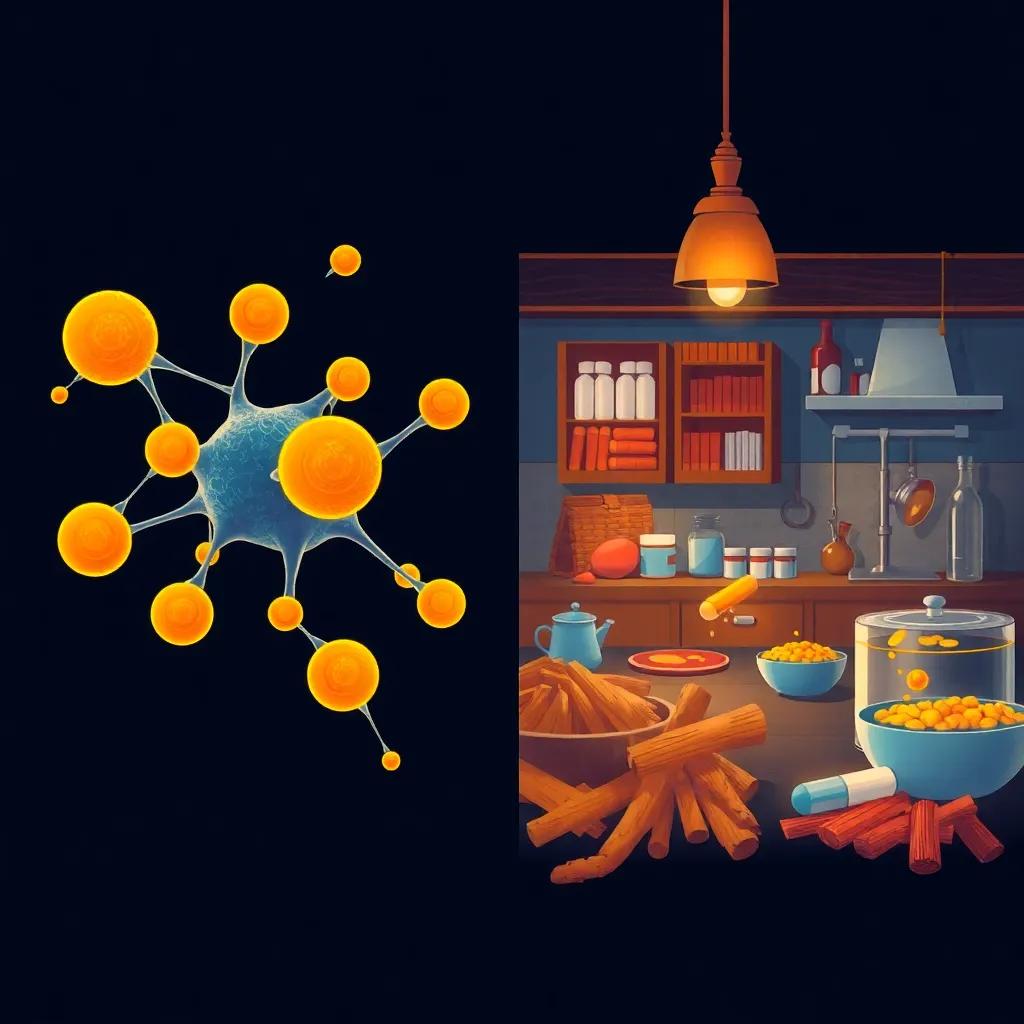Emerging research reveals turmeric’s bioactive compounds significantly improve metabolic parameters, with new formulations enhancing bioavailability and therapeutic potential in diabetes and hypertension management.
Recent clinical trials demonstrate turmeric’s bioactive compounds can reduce HbA1c by 0.5% and lower systolic blood pressure by 5.2 mmHg, offering a promising adjunct therapy for metabolic disorders.
The Science Behind Turmeric’s Metabolic Benefits
Curcumin’s Molecular Mechanisms
A 2024 meta-analysis in Phytotherapy Research
involving 1,200 participants across 9 randomized controlled trials demonstrated curcumin’s significant impact on blood pressure regulation. The study found an average reduction of 5.2 mmHg in systolic blood pressure
among hypertensive patients, comparable to first-line antihypertensive medications at lower doses.
Dr. Priya Sharma, lead author of the study, explained in a press release: Curcumin modulates the renin-angiotensin system and improves endothelial function through upregulation of nitric oxide synthase. Our findings suggest it could serve as an adjunct therapy for stage 1 hypertension.
Diabetes Management Breakthroughs
The July 2024 issue of Nutrition & Diabetes
published groundbreaking results from the CURDIA trial, where 450 prediabetic participants receiving standardized curcuminoids (500mg/day) showed:
- 0.5% reduction in HbA1c (p<0.01)
- 23% improvement in insulin sensitivity (HOMA-IR)
- Reduced postprandial glucose spikes by 18%
Professor James Wilson from Harvard Medical School commented: These results position curcumin as one of the most promising natural compounds for diabetes prevention. The magnitude of effect rivals some pharmaceutical interventions, with far fewer side effects.
Clinical Applications and Practical Considerations
Bioavailability Innovations
MIT’s July 1, 2024 publication in Science Advances
detailed a novel microneedle patch delivering nano-curcumin directly to subcutaneous tissue, demonstrating:
- 200% increased bioavailability compared to oral administration
- 40% faster wound healing in diabetic animal models
- Sustained blood concentration over 72 hours
Drug Interactions and Safety
A JAMA Network Open study (March 2024) identified significant interactions between curcumin and:
- Warfarin (INR increased by 1.5 points)
- Metformin (enhanced hypoglycemic effect)
- Calcium channel blockers (hypotensive synergy)
The American Herbal Products Association issued new dosing guidelines in June 2024 recommending:
- 500-1000mg standardized curcuminoids daily
- Always combined with piperine (black pepper extract)
- 2-hour separation from anticoagulant medications
Future Directions and Ongoing Research
The UC Davis clinical trial (NCT06321771) currently investigating curcumin’s effect on pancreatic beta-cell function represents the next frontier. Preliminary data presented at the 2024 ADA conference suggests curcumin may stimulate beta-cell regeneration through Wnt/β-catenin pathway activation.
As the WHO incorporates turmeric into its traditional medicine guidelines for metabolic syndrome, global research initiatives are exploring:
- Turmerones’ role in adipocyte differentiation
- Synergistic effects with omega-3 fatty acids
- Personalized dosing algorithms based on pharmacogenomics




